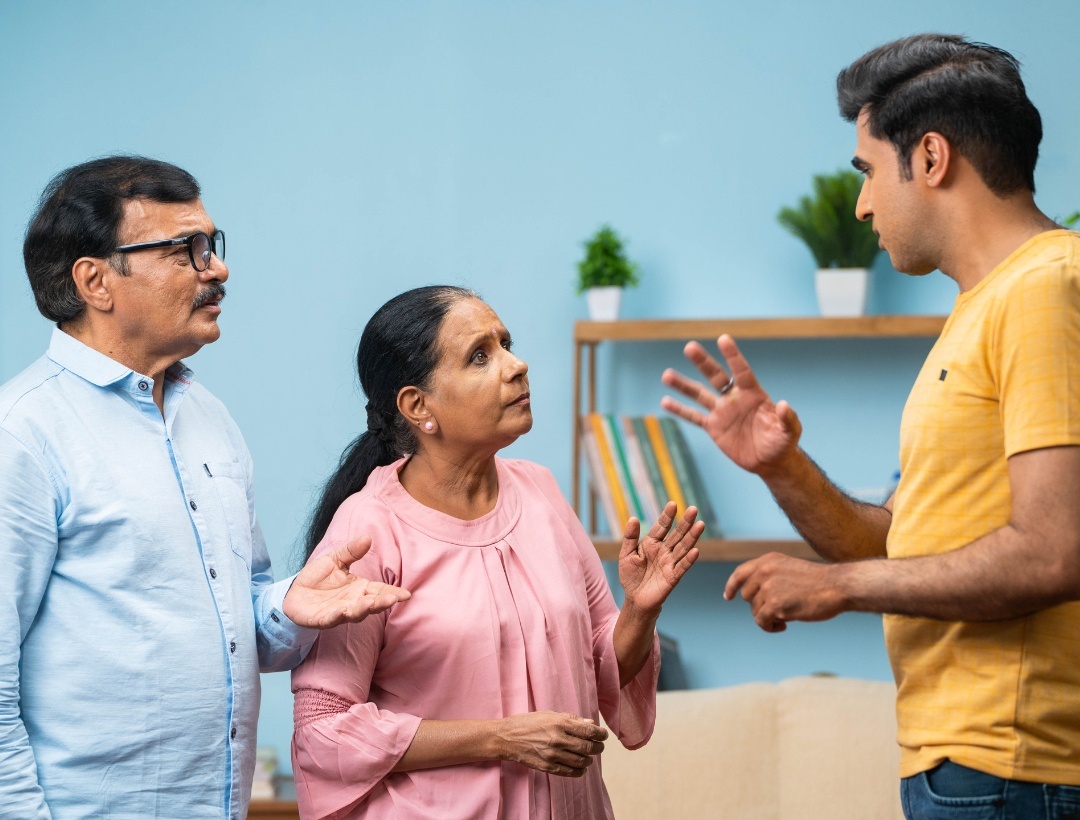Understanding Intergenerational Trauma in South Asian Immigrant Families

As a South Asian psychotherapist, I often work with people who share similar cultural backgrounds and experiences. One of the most significant yet unspoken challenges I’ve encountered – both personally and in my work – is intergenerational trauma.
Intergenerational trauma silently shapes the lives of individuals and families in ways that often go unnoticed. For many South Asian immigrants and their children, trauma doesn’t always look like a single painful event—it is woven into daily interactions, expectations, and the silent weight of past struggles.
The process of immigrating to a new country is challenging in itself, but the unspoken burdens of past generations—war, displacement, financial struggles, domestic violence, or discrimination—often continue to shape how we view ourselves, navigate relationships, and process emotions.
In this blog, we will explore what intergenerational trauma is, common ways in which it manifests in South Asian communities, and the steps we can take toward healing.
What is Intergenerational Trauma?
Intergenerational trauma is the phenomenon through which the emotional and psychological wounds of one generation are passed down to the next. While we often think of trauma as something we experience directly, it can also be inherited through the way our families communicate (or don’t), the expectations placed upon us, and the unconscious fears that shape our upbringing.
This trauma is not always spoken about, but its effects are deeply felt. It can show up in:
- Family dynamics that prioritize sacrifice over self-care
- Parenting styles based on fear, control, or overprotection
- Emotional suppression, where vulnerability is seen as weakness
- Internalized beliefs around success, duty, and self-worth
For example, a parent who grew up in extreme poverty may develop a scarcity mindset, unintentionally passing down financial anxiety to their children—even when financial stability has been achieved. Or a grandparent who survived war and never processed their trauma may encourage emotional suppression to build character, leading to generational struggles with expressing emotions including love and affection.
How Intergenerational Trauma Manifests in South Asian Immigrant Families
The experience of growing up in a South Asian immigrant family comes with unique challenges. Both first generation and second generation immigrants are often caught between two worlds one that values individuality and self-expression, and another that prioritizes family, duty, and tradition.
Here are some common ways intergenerational trauma shows up:
1. Cultural Disconnect & Identity Struggles
Navigating dual identities can feel like walking a tightrope. While many South Asian immigrants embrace aspects of Western culture, family expectations often emphasize maintaining cultural roots. This tension can lead to:
- Feeling alienated from both cultures—”too Western” for South Asian spaces, “too South Asian” for Western ones.
- Guilt for wanting independence, whether in career choices, relationships, or lifestyle.
- Struggles with gender norms—balancing traditional expectations with personal beliefs.
📌 Example: A second-generation South Asian woman may feel pressure to marry at a certain age dictated by family while simultaneously wanting to pursue higher education and career ambitions—leading to internal conflict.
2. Guilt & Emotional Burden Toward Family
Many South Asian cultures emphasize filial duty, where caring for parents and family is expected. While strong family ties can be meaningful, they can also create emotional burdens, such as:
- Feeling responsible for a parent’s happiness or emotional well-being.
- Struggling to set boundaries without guilt.
- Experiencing anxiety over decisions that may go against family expectations (e.g., choosing a non-traditional career, delaying marriage, or prioritizing mental health).
📌 Example: A young man who wants to move out for personal growth may feel deep guilt, fearing it would be seen as abandoning his parents.
3. Communication Barriers & Emotional Suppression
Many South Asian families struggle with open conversations about emotions, trauma, or mental health. Parents who endured hardship may believe “we don’t talk about these things” or “it’s not a big deal, you need to get over it”, unintentionally creating cycles of silence that leave younger generations feeling unheard and invalidated.
📌 Example: A child opening up about depression or anxiety might be met with dismissal—”Just be grateful for what you have.” This response is not meant to harm but is often a reflection of how past generations coped with adversity.
 4. Mental Health Stigma & the Pressure to Appear Strong
4. Mental Health Stigma & the Pressure to Appear Strong
Mental health is rarely discussed in many South Asian households. Seeking therapy may be seen as unnecessary or even shameful. Instead, struggles are sometimes met with:
- “We didn’t have therapy, and we survived.”
- “You are making things worse for yourself by paying attention to trivial things-get over it”
- “What will people think?”
📌 Example: A man struggling with anxiety or depression may be told to “work harder” rather than seek support, leading to shame and suppression of emotions.
5. The Expectation of Success & Perfectionism
Many South Asian immigrant parents sacrificed stability for better opportunities, which can lead to high expectations on children to “make their sacrifices worth it.” While this comes from a place of love, it can also result in:
- Perfectionism and fear of failure.
- Pressure to follow specific career paths (e.g., medicine, engineering, law).
- Feeling that personal fulfillment is secondary to success.
📌 Example: A child passionate about the arts may struggle with self-worth if their career choice is seen as “not practical.”
Steps Toward Healing
Intergenerational trauma is not your fault, but healing is possible. Here’s how you can start:
1. Recognize the Patterns
Understanding how past trauma has shaped your family is the first step toward change.
Ask yourself:
✔️ What messages about emotions, success, or relationships did I inherit?
✔️ What patterns do I want to break for myself and future generations?
2. Develop Self-Compassion & Release Guilt
Healing means learning to:
✔️ Validate your own emotions—even if they weren’t acknowledged growing up.
✔️ Set boundaries that are in line with your personal values.
✔️ Reframe self-worth beyond achievements.
3. Practice Emotional Expression
If emotional suppression was normalized in your family, learning healthy emotional expression can be transformative.
Consider:
✔️ Writing, art, or therapy to explore suppressed feelings.
✔️ Practicing mindfulness or breathwork to regulate emotions.
✔️ Engaging in community spaces that validate your experience.
4. Have Open Conversations when safe to do so:
Breaking cycles requires dialogue.
If possible, try to:
✔️ Gently challenge harmful family patterns with compassion.
✔️ Create non-judgmental spaces for discussion.
✔️ Approach difficult conversations with curiosity rather than blame.
 5. Reconnect with Your Cultural Identity in an Empowering Way
5. Reconnect with Your Cultural Identity in an Empowering Way
Your heritage can be a source of strength rather than pressure.
Consider:
✔️ What traditions and values feel meaningful to you?
✔️ Which ones do you want to let go of?
✔️ How can you reclaim your culture in a way that aligns with your well-being?
5. Seek Culturally Informed Therapy & Support
Healing doesn’t have to be done alone. A culturally competent therapist can help you:
✔️ Unpack inherited trauma.
✔️ Develop healthier emotional tools.
✔️ Create a future that aligns with your values, not just family expectations.
Intergenerational trauma is not a life sentence—we have the power to break cycles and redefine our relationships with ourselves, our families, and our culture. Healing doesn’t mean rejecting your heritage, but rather honoring it in a way that nurtures your well-being.
You are not alone in this journey. Support is available, and healing is possible. 💙
Written by Afreen Dhamani

